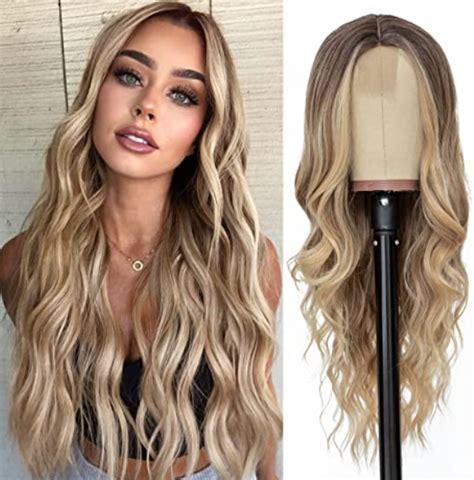Introduction
Hair loss, whether due to medical conditions, aging, or genetics, can be a significant concern for many men. The good news is that advanced hair systems have emerged as a viable solution, offering wigs that look remarkably real and can restore confidence and self-esteem. In this comprehensive guide, we delve into the world of male wigs, exploring the latest advancements, types, and strategies for achieving the most natural-looking results.

Types of Male Wigs
-
Lace Wigs: Lace wigs are crafted with a thin, mesh-like material that seamlessly conforms to the scalp. This allows for a natural-looking hairline and the flexibility to part or style the hair in various ways.
-
Mono Wigs: Mono wigs utilize a single layer of monofilament fabric that provides an illusion of scalp through the hair. This creates a realistic appearance, particularly when the hair is parted.
-
Skin Wigs: Skin wigs feature a thin, silicone-based material that mimics the scalp’s texture and tone. They offer the most realistic appearance, but require expert installation and maintenance.
Choosing the Right Wig
-
Hair Type: Match the hair type of the wig to your natural hair. This includes texture (straight, wavy, curly) and density (fine, medium, thick).
-
Color: Select a color that complements your natural hair and skin tone. Use a color swatch or consult with a professional stylist to determine the most suitable shade.
-
Cap Size: Determine the circumference of your head to ensure a comfortable and secure fit. Wig caps come in various sizes, so it’s crucial to measure accurately.
Benefits of Male Wigs
-
Hair Restoration: Wigs offer an effective way to restore hair volume and combat baldness or thinning hair.
-
Versatile Styling: Wigs allow for endless styling possibilities, allowing you to experiment with different hair lengths, textures, and colors.
-
Confidence Boost: A well-fitting and natural-looking wig can significantly boost self-confidence and enhance overall well-being.
Achieving Natural Results
-
Professional Installation: Seek the assistance of a skilled wig stylist to ensure proper installation and blending with your natural hair.
-
Accurate Haircut: Have the wig cut and styled by a professional hairstylist to create a seamless transition with your natural hair.
-
Proper Maintenance: Follow the care instructions for your wig to maintain its health, appearance, and longevity.
Tables
| Benefit | Description |
|---|---|
| Hair Restoration | Restore hair volume and combat baldness |
| Versatile Styling | Experiment with different hair lengths, textures, and colors |
| Confidence Boost | Boost self-confidence and enhance overall well-being |
| Wig Type | Advantages | Disadvantages |
|---|---|---|
| Lace Wigs | Natural-looking hairline, versatile styling | Delicate, requires careful handling |
| Mono Wigs | Illusion of scalp, comfortable to wear | May not be as durable as lace wigs |
| Skin Wigs | Most realistic appearance | Expensive, requires professional installation and maintenance |
| Maintenance Tips | Description |
|---|---|
| Use a wig-specific brush or comb | Prevent tangles and maintain hair health |
| Wash the wig regularly | Follow the manufacturer’s instructions for proper cleaning and conditioning |
| Store the wig properly | Use a wig stand or bag to protect the wig from damage |
Tips and Tricks
-
Blend Your Natural Hair: If you still have some natural hair, blend it with the wig by trimming it to a similar length and using styling products to enhance the transition.
-
Experiment with Density: Choose a wig density that matches your natural hair thickness. Too dense a wig can look unnatural, while too thin a wig may not provide adequate coverage.
-
Avoid Wig Glue: Opt for adhesives that are specifically designed for lace wigs to prevent skin irritation and damage.
